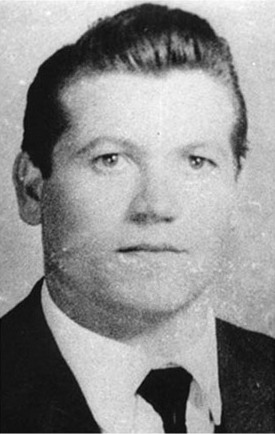
Bernardo Provenzano was an Italian mobster and chief of the Sicilian Mafia clan known as the Corleonesi, a Mafia faction that originated in the town of Corleone, and de facto the boss of bosses. His nickname was Binnu u tratturi because, in the words of one informant, "he mows people down." Another nickname was il ragioniere due to his apparently subtle and low-key approach to running his crime empire, at least in contrast to some of his more violent predecessors.
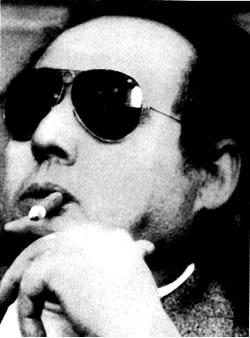
Luciano Leggio was an Italian criminal and leading figure of the Sicilian Mafia. He was the head of the Corleonesi, the Mafia faction that originated in the town of Corleone. He is universally known with the surname Liggio, a result of a misspelling in court documents in the 1960s.

Stefano Bontade was a powerful member of the Sicilian Mafia. His actual surname was Bontate. He was the boss of the Santa Maria di Gesù Family in Palermo. He was also known as the Principe di Villagrazia − the area of Palermo he controlled − and Il Falco. He had links with several powerful politicians in Sicily, and with prime minister Giulio Andreotti. In 1981 he was killed by the rival faction within Cosa Nostra, the Corleonesi. His death sparked a brutal Mafia War that left several hundred mafiosi dead.

The Maxi Trial was a criminal trial against the Sicilian Mafia that took place in Palermo, Sicily. The trial lasted from 10 February 1986 to 30 January 1992, and was held in a bunker-style courthouse specially constructed for this purpose inside the walls of the Ucciardone prison.

Leoluca Bagarella is an Italian criminal and member of the Sicilian Mafia. He is from the town of Corleone. Following Salvatore Riina's arrest in early 1993, Bagarella became the head of the stragist strategy faction, opposing another faction commanded by the successor designate Bernardo Provenzano, creating a real rift in Cosa Nostra. Bagarella was captured in 1995, having been a fugitive for four years, and sentenced to life imprisonment for Mafia association and multiple murders.

Giuseppe "Pippo" Calò is an Italian mobster and member of the Sicilian Mafia in Porta Nuova. He was referred to as the "cassiere di Cosa Nostra" because he was heavily involved in the financial side of organized crime, primarily money laundering. He was arrested in 1985 and charged with ordering the murder of Roberto Calvi – nicknamed "Il banchiere di Dio" – of the Banco Ambrosiano in 1982, but was acquitted in 2007 due to "insufficient evidence" in a surprise verdict. After Calò was sentenced to 23 years' imprisonment as part of the 1986/87 Maxi Trial, he was sentenced to life imprisonment in 1989 for organising the 1984 Train 904 bombing. He was given several further life sentences between 1995 and 2002.

Michele Greco was a member of the Sicilian Mafia and a convicted murderer. Greco died in prison while serving multiple life sentences. His nickname was Il Papa due to his ability to mediate between different Mafia families. Greco was the head of the Sicilian Mafia Commission.
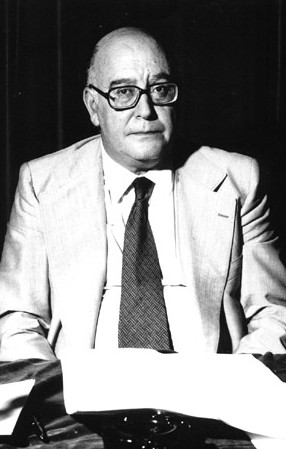
The Sicilian Mafia Commission, known as Commissione or Cupola, is a body of leading Sicilian Mafia members to decide on important questions concerning the actions of, and settling disputes within the Sicilian Mafia or Cosa Nostra. It is composed of representatives of a mandamento that are called capo mandamento or rappresentante. The Commission is not a central government of the Mafia, but a representative mechanism for consultation of independent Mafia families who decide by consensus. "Contrary to the wide-spread image presented by the media, these superordinate bodies of coordination cannot be compared with the executive boards of major legal firms. Their power is intentionally limited [and] it would be entirely wrong to see in the Cosa Nostra a centrally managed, internationally active Mafia holding company," according to criminologist Letizia Paoli.

Michele Cavataio, also known as Il cobra was an Italian mobster and powerful member of the Sicilian Mafia. He was the boss of the Acquasanta mandamento in Palermo and was a member of the first Sicilian Mafia Commission. Some sources spell his surname as Cavatajo.
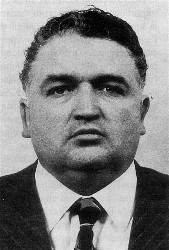
Giuseppe Di Cristina was a powerful mafioso from Riesi in the province of Caltanissetta, Sicily, southern Italy. Di Cristina, nicknamed “la tigre’’, was born into a traditional Mafia family, his father Francesco Di Cristina and his grandfather were men of honour as well.

The Corleonesi Mafia clan was a faction within the Corleone family of the Sicilian Mafia, formed in the 1970s. Notable leaders included Luciano Leggio, Salvatore Riina, Bernardo Provenzano, and Leoluca Bagarella.

Giuseppe “Pippo” Calderone was an influential Sicilian mafioso from Catania, eventually becoming the capo of the Catania Mafia family.
Giuseppe Marchese is a former member of the Sicilian Mafia, who turned state witness (pentito). Giuseppe Pino Marchese was born in Palermo in a family with long-standing ties to the Mafia. His father Vincenzo and his uncle Filippo Marchese were both members of Cosa Nostra.
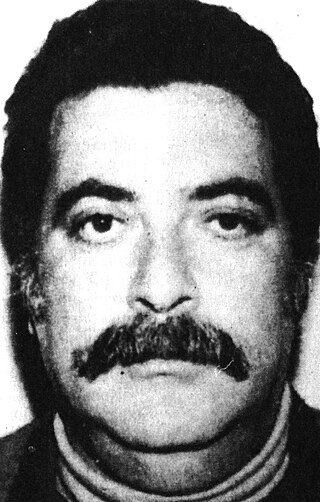
Antonino Calderone was a Sicilian Mafioso who turned state witness (pentito) in 1987 after his arrest in 1986.
The Second Mafia War was a period of conflict involving the Sicilian Mafia, mostly taking place from the late 1970s to the early 1990s and involved thousands of homicides. Sometimes referred to as The Great Mafia War or the Mattanza, it involved the entire Mafia and radically altered the power balance within the organization. In addition to the violence within the Mafia itself, there was violence against the state, including a campaign of deliberate assassinations of judges, prosecutors, detectives, politicians, activists and other ideological enemies. In turn, the war resulted in a major crackdown against the Mafia, helped by the pentiti, Mafiosi who collaborated with the authorities after losing so many friends and relatives to the fighting. In effect, the conflict helped end the secrecy of the Mafia.

Antonino "Nino" Rotolo is a Sicilian Mafia boss from the Pagliarelli area in Palermo that traditionally was under the control of the Motisi Mafia family. Rotolo was the underboss of Matteo Motisi, but according to some pentiti he was the de facto leader representing the mandamento on the Sicilian Mafia Commission. In 2006, the police deduced that Rotolo — Number 25 in the numbered code of Mafia boss Bernardo Provenzano — had become a key figure in Cosa Nostra's hierarchy.

The Greco Mafia family is historically one of the most influential Mafia clans in Sicily and Calabria, from the late 19th century. The extended family ruled both in Ciaculli and Croceverde Giardini, two south-eastern outskirts of Palermo in the citrus growing area and also rural areas of Calabria where they controlled the olive oil market. Members of the family were important figures in the Sicilian Cosa Nostra and Calabrian 'Ndrangheta. Salvatore "Ciaschiteddu" Greco was the first ‘secretary’ of the Sicilian Mafia Commission, while Michele Greco, also known as The Pope, was one of his successors.

Salvatore Riina, called Totò 'u Curtu, was an Italian mobster and chief of the Sicilian Mafia, known for a ruthless murder campaign that reached a peak in the early 1990s with the assassinations of Antimafia Commission prosecutors Giovanni Falcone and Paolo Borsellino, resulting in widespread public outcry and a major crackdown by the authorities. He was also known by the nicknames la belva and il capo dei capi.

Giuseppe Greco was a hitman and high-ranking member of the Sicilian Mafia. A number of sources refer to him exclusively as Pino Greco, although Giuseppe was his Christian name; "Pino" is a frequent abbreviation of the name Giuseppe.
















